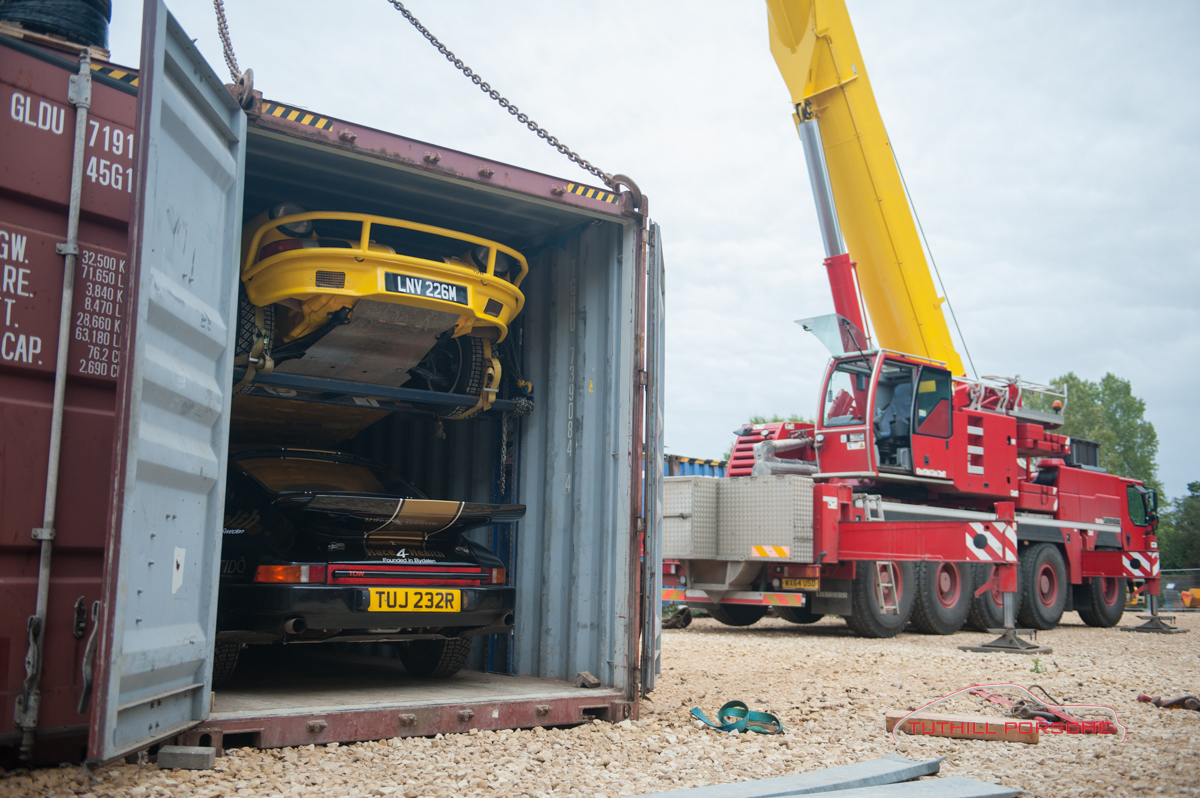
Richard’s sixth column for GT Porsche magazine looks at the work involved in a successful Safari Classic Rally campaign:
We are perhaps best known for our Safari Classic Rally participation and produced a fly-on-the-wall documentary about the 2013 event. This is a very nice memory to have and can still be enjoyed on our Youtube channel at youtube.com/tuthillporsche – or watch it below.
Despite competing on every Safari Classic Rally held since the original in 2003, it still raises the hair on the back of my neck as I think about going again. But, before we get there, we have countless hours of preparation to do, some of which is very detailed, on both the cars and the kit we take out. This is because we do not rely on any local resources when we are in Kenya. Of course, we have amazing friends and contacts there should we need anyone, or anything, but the idea is that we should be entirely self-sufficient from the minute we arrive.
One might think that after the 2003 and 2005 editions, we had it all understood and it was a case of rolling it out again and again. Not so, I’m afraid. It wasn’t until 2013 that we finally came back from the event knowing the secret.
In 2013, we ran seventeen cars directly and had twenty-one cars on the event. It was the biggest rally team in history. I knew that, if I got this wrong, then it would not simply be a disappointment; it would be a disaster on a scale that I would not have wished to witness. More than that, those looking in would have simply said we took on too much and messed up. The pressure was on, but, helped by a team of hugely dedicated staff, we nailed it.
Safari led us to develop a system for maintaining large numbers of cars in remote locations, and this is what we now do wherever and whenever we travel on events. We effectively run a myriad of individual teams, controlled and coordinated centrally. Each car has its own spares kit box – 6ft x 3ft x 3ft – in which there are enough parts and spares to do most of the rally.
On top of these spares kits, we also have a mother ship in the form of a 40ft container that travels everywhere with us. Forty per cent of the container is an air-conditioned parts store, which is racked and loaded with military precision, leaving sixty per cent to hold than two hundred wheels and tyres and other large consumables and equipment. The photo attached shows a small part of this being loaded. While it is quite something to witness, it’s also quite something to pay for!
Events are often loss leading. By this I mean that they are rarely profit centres. With a big team we can create some profit from events, but it’s hard earned and the risk is high. My outlook, however, is simple: I love big events, I love big challenges, and there are no greater challenges on offer than this one. So if we offer support and encourage clients to travel to great countries and enjoy their cars, then they will need us to a) supply them with cars and b) rebuild them afterwards.
Therefore, as I write this, the containers are nearly loaded, the final tyres are being mounted on wheels, the cars have been tested (in a Welsh forest this year) and the final bits and pieces are coming together – including the occasional last-minute drama. We are now quite used to the process, so on the whole we don’t burn any midnight oil to achieve this. Yes, for the final two weeks, the whole business focuses solely on this one mission, but the dramatic all-nighters that we used to put in to hit our target shipping date have long gone.
The whole thing from now through to being on the event is incredibly pure. All involved are focused, all pulling together, and the spirit in the team is great. The admin side of shipping this lot half way round the world and back is not insignificant. All of the cars must travel with a passport: a Carnet de Passage. All spares must be itemised and loaded in exact locations, these then have to sustain poor handling and bumpy roads and, largely speaking, return to the UK five months from now a little dustier than when they left, but generally in good shape.
The fact is that we take hundreds of thousands of parts with us and very few actually ever get fitted, which is a real testament to the tireless development of our 911 rally cars since the late 1980s. Win or lose Safari, it is impossible not to enjoy this incredible challenge.
 Back to News
Back to News

